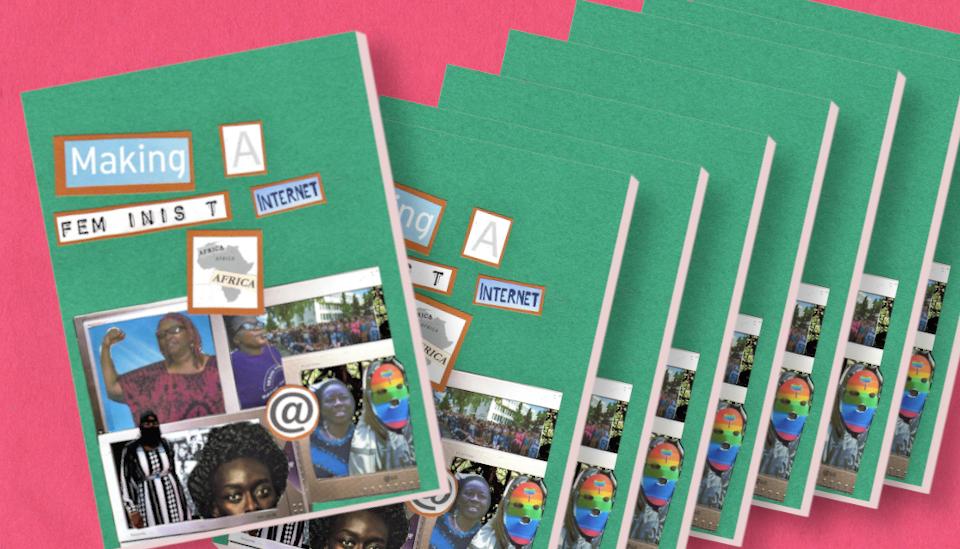Documentation
 An ezine was created by Wairimũ Murĩithi and Youlendree Appasamy in 2020, to document the MFIAfrica convening in Johannesburg in 2019.
An ezine was created by Wairimũ Murĩithi and Youlendree Appasamy in 2020, to document the MFIAfrica convening in Johannesburg in 2019.
Documenting your conversation has three key roles:
-
It makes your event more inclusive, as you are able to share the notes and insights of your event with those who were unable to attend.
-
It enables learning for both you and your participants, as the notes become a reference for continued organising.
-
It enhances accountability in a conversation context in which key decisions are being made, or strategies are being discussed for future action around a particular issue.
Two key aspects of your conversation that are useful to document are:
-
The content of conversations
-
The process for holding the conversation space
Depending on the nature of the event, you may also want to note other aspects, such as the names and contact details of participants (with their permission), and logistical details.
Ways of documenting
Documentation can be done through a range of media, including text or transcribing, illustrations, photographs and sound recordings. All conversation materials, including posters and sticky notes, and online collaboration spaces for conducting activities in the case of a virtual event, are also rich resources that can contribute to the documentation of the conversation.
| Medium of documentation: | Useful for: | What you need: |
| Live text |
Capturing spoken insights and important quotes Sharing key points with participants post-event Recording the structure of the conversation and process Report writing Writing publishable thought pieces about insights |
|
| Illustrations |
Capturing the energy of the room Sharing insights in an accessible, visually intriguing way Creating communication outputs about the event |
|
| Sound recordings |
Transcribing spoken conversation word-for-word Report writing Capturing spoken insights if a dedicated text documenter is unavailable |
For an in-person event:
For a virtual event:
|
| Photography and videography |
Capturing insights shared on conversation materials, such as post-it notes and posters, or slides of presentations Capturing the energy of the room Sharing clips or visuals in communication content about the event |
|
Storage and transfer of files
How you store your documentation materials will impact the safety of that data. Based on your context, you may prefer to store documentation materials online on a secure cloud platform, or offline on a hard drive, or both. You may also want to decide beforehand on the use of a specific secure infrastructure, such as a password-protected online notepad, on which notes can be created and kept, especially if you are in a country with high levels of online surveillance.
The safety of data can also be compromised during the transfer of files. Try to avoid emailing files if you feel that the material you are sharing must remain confidential. If needed, consider encrypting any file in transit, or create a secure, password-protected shared folder online in which documenters can download files or access them.
Safety of participants
It is important to recognise that the documentation of your event can compromise the safety of participants if not adapted to their security needs. Some precautions you can take include:
-
Inform participants before the event of your intention to document the conversation, for what reason, and how.
-
Prepare a short questionnaire that folks can fill out on arrival to your event that asks them whether they give permission to be filmed, photographed or otherwise recorded, or attributed in text. Some participants will not want their presence to be documented in any way, while others will only want to give permission under certain conditions.
[Insert link to appendix/resources section that includes questionnaire template on permissions/consent]
-
Establish a set of protocols collectively at the start of the conversation that informs how you document, and under which conditions you don’t. Decide together how to indicate to the collective if a certain contribution is off the record, or if a participant wishes for a particular comment they make to remain anonymous.
-
Discuss with participants at the start of the event whether those attending can publish insights on their social media, and if so, under what conditions.
Remember!
Back up your documentation on an encrypted hard drive or secure online cloud at the end of each session or conversation day to mitigate the risk of losing the files!
For more details on documenting virtual events specifically, visit this page Documentation design and preserving memories, from the APC guidelines on planning and designing online events)

No Comments